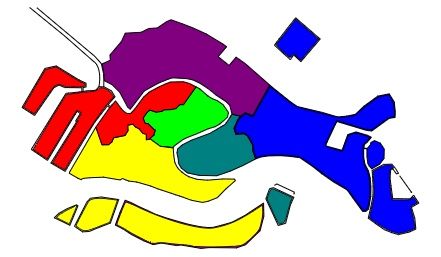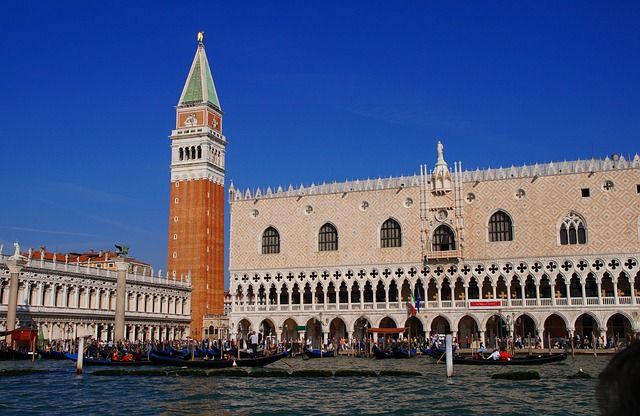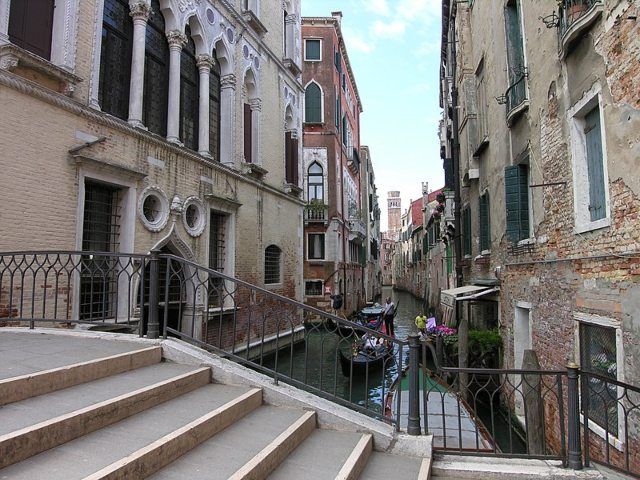Venice, with its 6 districts, is one of the most fascinating places in Italy.
What makes Venice even more unique is that it is divided into six districts called "sestieri". Each of them has its own charm and unique characteristics that make it worth exploring.
In this blog post, we'll take a closer look at each district in Venice, Italy, and what makes them special.
The 6 Districts of Venice, Italy: a closer look to the map of the city

The word "sestiere" comes from the Latin word "sextarius", which means "one-sixth".
In the case of Venice, the city is divided into six districts, or sestieri, each with its own unique character and history.
The districts were created to help with the administration of the city, and they have remained an important part of the identity of the city ever since.
From the earliest times this subdivision was also reflected in the composition of certain magistracies, such as that of the six ducal councilors elected to the Minor Council, electing one for each sestiere. Particular officials, called the capisestiere, were in charge of reporting to the government on the identity and behavior of resident citizens.
The 6 Districts of Venice included in the most important symbol of the city

The six sestieri of Venice, Italy, are said to be represented by the six front teeth of the gondola iron. The stylized representation of the city would thus consist of:
- The 6 front teeth (6 sestieri);
- The back tooth, the symbol of Giudecca;
- The S-shape reminiscent of the sinuous path of the Grand Canal;
- The small arch reminiscent of the Rialto Bridge;
- The upper volute is reminiscent of both the Bacino San Marco and the dogal horn (doge's headdress).
In fact, the gondola irons depicted in the Venetian subject paintings turn out to be quite different from the actual ones. Those we see today are in fact the result of more modern modifications.
However, whether you're looking for history, culture, or just a beautiful place to wander, the sestieri of Venice have something to offer everyone.
Let's take a closer look at the 6 districts of Venice, Italy.
The most famous Sestiere of Venice: the inner heart of the city

The dark green spot in the map of the districts of Venice is San Marco.
It is the most famous sestiere in Venice and the heart of the city.
It is home to some of Venice's most popular attractions, including St. Mark's Basilica, the Doge's Palace, and the famous Piazza San Marco. This district is also where you can do some incredible shopping and enjoy the charm of historic cafes and restaurants.
The northern Sestiere

It's the violet spot of the map.
Cannaregio is the largest sestiere in Venice and also one of the most traditional. This district is home to the Jewish Ghetto, one of the oldest in Europe, as well as several beautiful churches and museums.
Cannaregio is a great place to explore if you want to experience the real Venice and escape the crowds.
The eastern part of the city

The blue spot represents the Castello area. Known for its rich history and traditional Venetian charm, Castello is a fascinating district to explore.
Here, you can wander along quiet alleys lined with traditional shops and cafes, or admire the grandeur of the many historic buildings and churches that dot the district.
It is also home to several popular attractions, including the Biennale Gardens, the Arsenale shipyard, and the Church of San Giorgio dei Greci.
Whether you're interested in history, culture, or just soaking up the atmosphere of this unique city, this district has something to offer everyone.
The southern neighborhood of Venice

Dorsoduro (the light yellow spot) is a vibrant Sestiere that is home to several important museums and art galleries, including the Peggy Guggenheim Collection, a great museum of modern art, and the Accademia Galleries.
This district also has some of the best nightlife in Venice (go to Campo Santa Margherita and you will know!), with plenty of bars and restaurants.
The starting point of your visits to the city

Santa Croce (the red spot in the map) is the smallest sestiere in Venice, but it is definitely worth a visit.
This district is home to the famous Scalzi and Calatrava Bridges, two of the most iconic landmarks in Venice.
Santa Croce is also home to incredible museums, like the Natural History and the Oriental Art Museums, but also to incredible churches.
The old heart of the city

San Polo (the bright green spot) is the oldest sestiere in Venice and one of the most charming.
This district is home to the famous Rialto Bridge and the Rialto Market, where you can buy fresh seafood, fruits, and vegetables. Here you can also find the Church of San Giacomo di Rialto, one of the oldest in Venice.
Your trip to Venice according to the knowledge of the 6 Sestieri of Venice Italy
Now that you have a better idea of what each district has to offer, it's time to start planning your trip to Venice. Whether you're interested in art, architecture, history, or simply exploring the city's hidden corners, Venice has something for everyone.
To make the most of your trip, consider taking a walking tour of the city or hiring a private guide to show you around. And don't forget to take a ride in a gondola, one of the most iconic experiences in Venice.
In conclusion, Venice is a city like no other, and its six districts offer a unique perspective on this fascinating place. From the bustling streets of San Marco to the quiet alleys of Santa Croce, each district has its own charm and character that will leave you wanting more.
So why not book your trip today and discover the magic of Venice for yourself?

